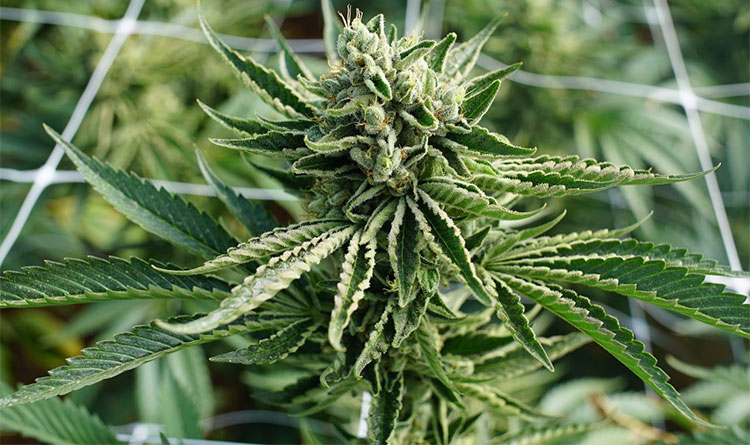Cannabinoid-containing cannabis plants are caused by an infection with an ancient virus
According to an international research team, marijuana plants receive genes that encode proteins to synthesize cannabinoid active substances from ancient viruses, which have infiltrated plant DNA and are there to date.
According to Genome Research magazine, marijuana plants receive genes that encode proteins to synthesize cannabinoid active substances from the virus that infiltrates the plant's DNA and stays there forever. Cannabis plants contain dozens of active substances but the main active ingredient, tetrahydrocannabinol (THC), stimulates appetite, prevents vomiting, and reduces pain and, of course, a neurotransmitter.

Cannabis sativa cannabis plant.
In addition, the same active substance is, not a neurotransmitter, but helps to ease anxiety. Interestingly, the ability of these ancestors to synthesize these substances of modern cannabis was obtained from the virus.
A research group, Tim Hughes at the University of Toronto, Canada and Harm van Bakel at Mount Sinai Hospital, New York, conducted a study of the genome of Cannabis sativa plants . Since 2011, Professor Tim Hughes has sketched this cannabis genome but has now correctly identified several individual genes in DNA and some unencrypted sections. Thus, scientists have identified an unknown gene that previously coded a protein that synthesizes another cannabinoid active substance of cannabichromen (CBC) .
Further research, scientists conclude that like the natural cases, it is clear that millions of years ago, marijuana plants infected with a virus introduced the genome of the plant coding genes. Protein to synthesize cannabinoid active substances. This ability turns out to be useful for plants and over time, plants begin to use it actively, helping it synthesize different cannabinoids.
- Discover how cannabis plants 'synthesize' pain killers
- Finding ways to cure memory loss caused by West Nile virus infection
- Development of new, less addictive cannabis varieties
- Cannabis can kill cancer cells
- Corona virus can spread widely on people
- France: Two more suspected cases of SARS virus infection
- New virus outbreaks occur via USB
- Compare the level of danger between HIV and Ebola virus
- Misunderstandings about the flu
- Find out the mechanism to maintain HIV infection
- Experience in HIV testing you need to know
- Revive the 700-year-old virus
 Why do potatoes have eyes?
Why do potatoes have eyes? 'Tragedy' the world's largest carnivorous life: Death becomes ... public toilet
'Tragedy' the world's largest carnivorous life: Death becomes ... public toilet Tomatoes were once considered 'poisonous' for 200 years
Tomatoes were once considered 'poisonous' for 200 years Detecting microscopic parasites on human face
Detecting microscopic parasites on human face